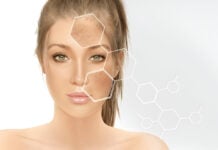Warts and molluscum contagiosum are among the most frequent viral skin infections in children. Though typically benign, they can cause discomfort, embarrassment, and secondary bacterial infections. Many traditional treatments, such as cryotherapy or curettage, are painful and poorly tolerated by young patients. Modern dermatologic care is shifting toward pain-free or minimally painful interventions that are not only effective but also psychologically comforting for children and their families (Bruggink et al., 2010).
Understanding Pediatric Warts and Molluscum
Warts are caused by the human papillomavirus (HPV), commonly seen on the hands, knees, and feet.
Molluscum contagiosum results from a poxvirus, producing small, umbilicated, flesh-colored papules. Both are contagious, spreading via direct contact, contaminated surfaces, or auto-inoculation.
Though these infections are often self-limited, resolution may take months to years. For many parents, cosmetic concerns and fear of spread prompt early treatment.
The Need for Pain-Free Options
Painful treatments like cryotherapy or curettage can lead to procedural anxiety, refusal of care, and trauma in children (Gupta & Gupta, 2019). Thus, pain-free strategies are increasingly favored, especially in young or anxious patients.
Pain-Free or Minimally Invasive Treatment Options
1. Topical Therapies
- Cantharidin: A painless agent applied in-office that causes delayed blistering to lift off the lesion. Safe and highly effective for both warts and molluscum (Silverberg et al., 2021).
- Imiquimod: Stimulates the local immune system to fight off viral infections. Useful for recalcitrant warts and some molluscum cases.
- Tretinoin: A retinoid cream commonly used for molluscum on the face or trunk. Mild irritation is possible but usually well tolerated (Hanna et al., 2006).
2. Physical Treatments with Numbing Support
- Curettage or cryotherapy can be made tolerable by applying lidocaine-prilocaine (EMLA) cream beforehand.
- Adhesive tape occlusion and salicylic acid pads provide gradual lesion removal without pain, making them excellent home options.
3. Immune-Boosting Therapies
- Cimetidine (oral H2-blocker): Though off-label, it may stimulate the immune response to HPV and molluscum. Mixed evidence, but minimal side effects (Orlow & Paller, 1993).
- Contact immunotherapy (e.g., squaric acid): Triggers a low-grade immune reaction to clear stubborn lesions. Requires specialist oversight.
4. Watchful Waiting
In many cases especially with molluscum contagiosum doing nothing is an appropriate and safe choice. Most children spontaneously clear the virus within 6–12 months (Tempark et al., 2022).
Comfort Strategies in Clinical Practice
- Topical anesthetics before procedures
- Distraction tools like games, cartoons, or music
- Parental presence for emotional reassurance
- Positive reinforcement (stickers, small rewards) post-treatment
- Simple explanations about what to expect
These small but powerful steps transform what could be a stressful experience into a cooperative and positive one.
When to Refer
Referral to a pediatric dermatologist is appropriate if:
- Lesions persist despite multiple treatments
- The child is immunosuppressed
- There is facial involvement or risk of scarring
- A definitive diagnosis is unclear
Multidisciplinary management may be needed in complex or extensive cases.
Pain-free removal of pediatric warts and molluscum is no longer a luxury it’s a standard of care. Treatments like cantharidin, tretinoin, and topical immunomodulators, combined with child-friendly comfort techniques, make therapy both effective and compassionate. Choosing the right method depends on lesion type, location, and child temperament, but the ultimate goal remains the same: healing without harm.
References
- Bruggink, S. C., Gussekloo, J., Berger, M. Y., Zaaijer, K., Assendelft, W. J. J., & Eekhof, J. A. H. (2010). Cryotherapy with liquid nitrogen versus topical salicylic acid for cutaneous warts in primary care: Randomised controlled trial. BMJ, 340, c2489. https://doi.org/10.1136/bmj.c2489
- Gupta, M., & Gupta, R. (2019). Treatment of cutaneous warts in children: A review. Indian Journal of Pediatric Dermatology, 20(1), 4–10. https://doi.org/10.4103/ijpd.ijpd_48_18
- Hanna, D., Hatami, A., Powell, J., Marcoux, D., & McCuaig, C. (2006). A prospective randomized trial comparing the efficacy of 0.05% tretinoin cream and cantharidin solution in the treatment of molluscum contagiosum in children. Pediatric Dermatology, 23(6), 584–588. https://doi.org/10.1111/j.1525-1470.2006.00301.x
- Orlow, S. J., & Paller, A. S. (1993). Cimetidine therapy for multiple viral warts in children. Journal of the American Academy of Dermatology, 28(5), 794–796. https://doi.org/10.1016/0190-9622(93)70090-X
- Silverberg, N. B., Weinberg, J. M., Bolognia, J. L., & Mohla, C. (2021). Cantharidin in the treatment of molluscum contagiosum and warts: A practical review. Pediatric Dermatology, 38(2), 281–287. https://doi.org/10.1111/pde.14427
- Tempark, T., Shwayder, T., & Shinkai, K. (2022). Management strategies for molluscum contagiosum: An updated review. International Journal of Women’s Dermatology, 8(1), e004. https://doi.org/10.1016/j.ijwd.2021.08.004












